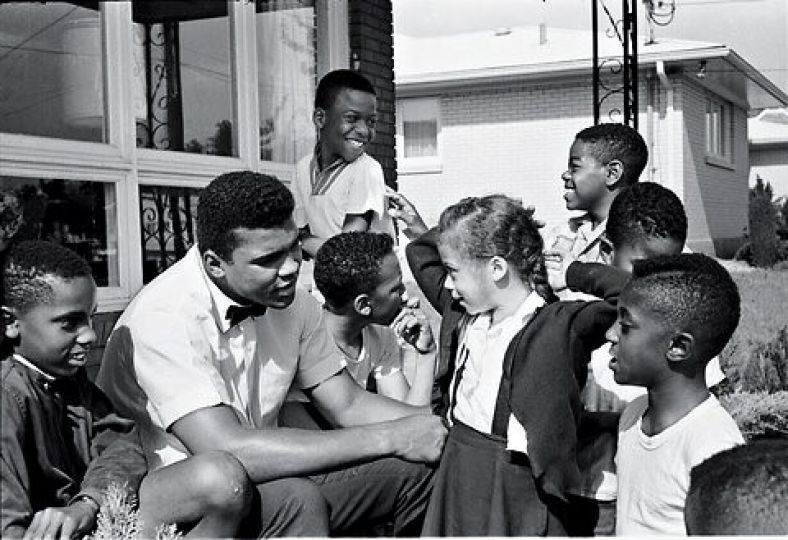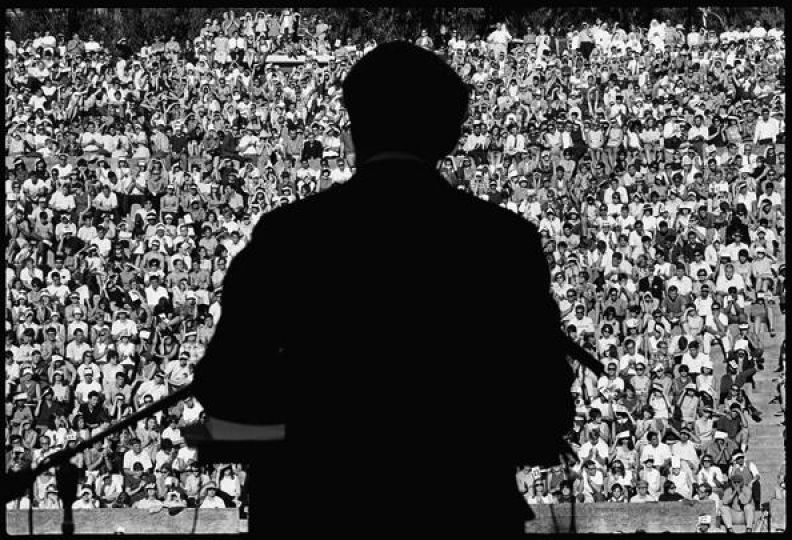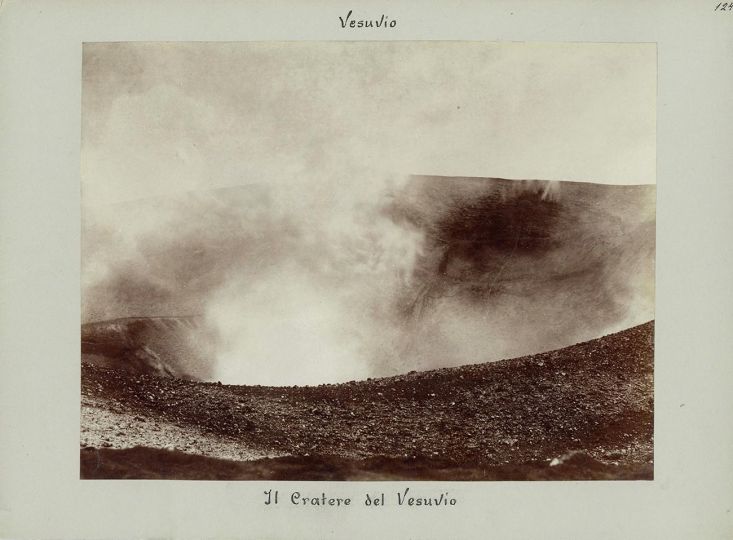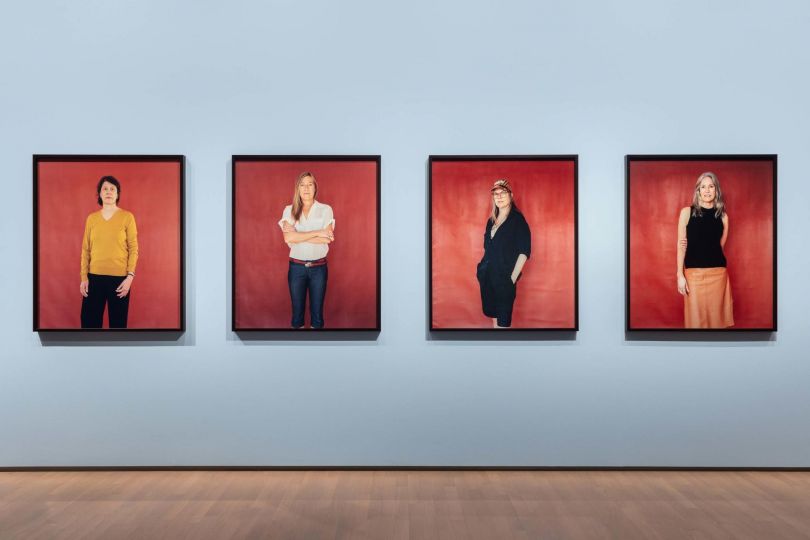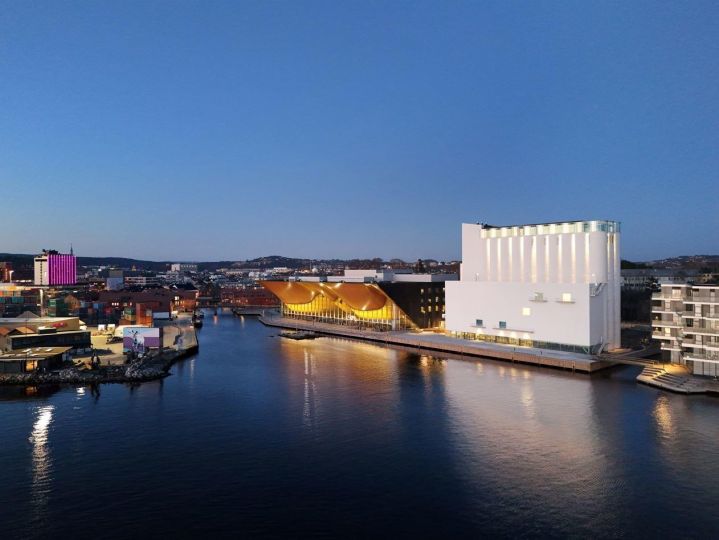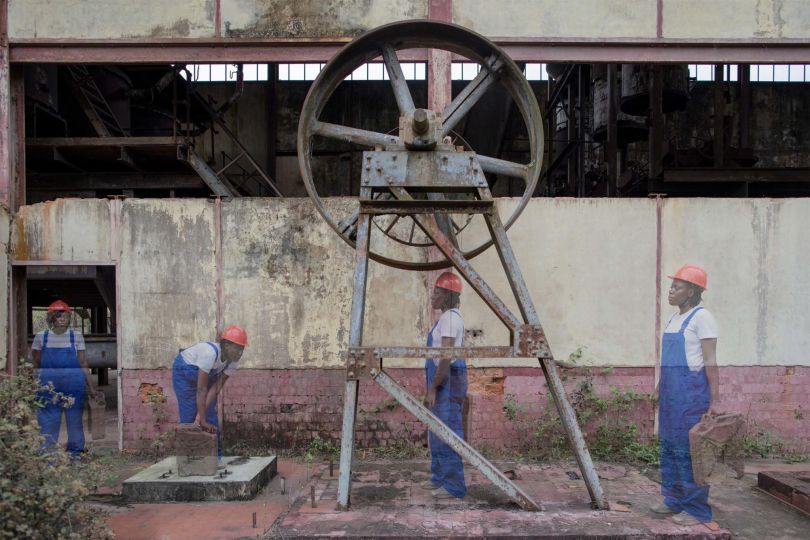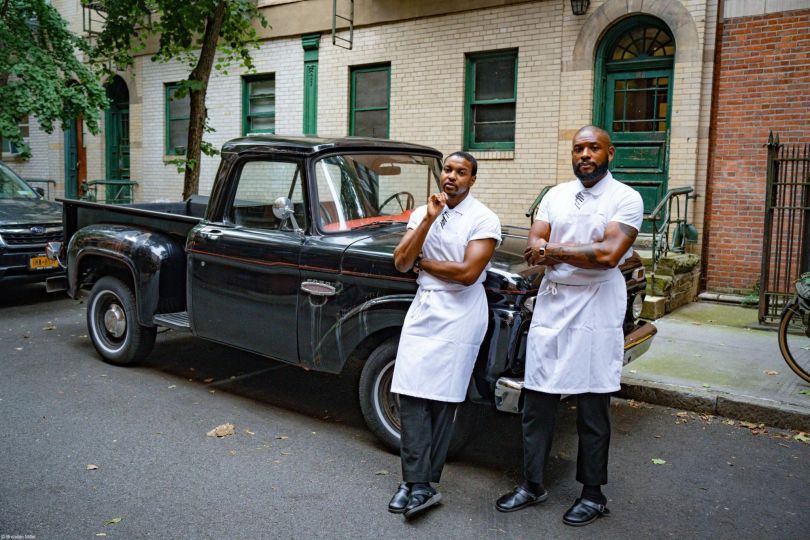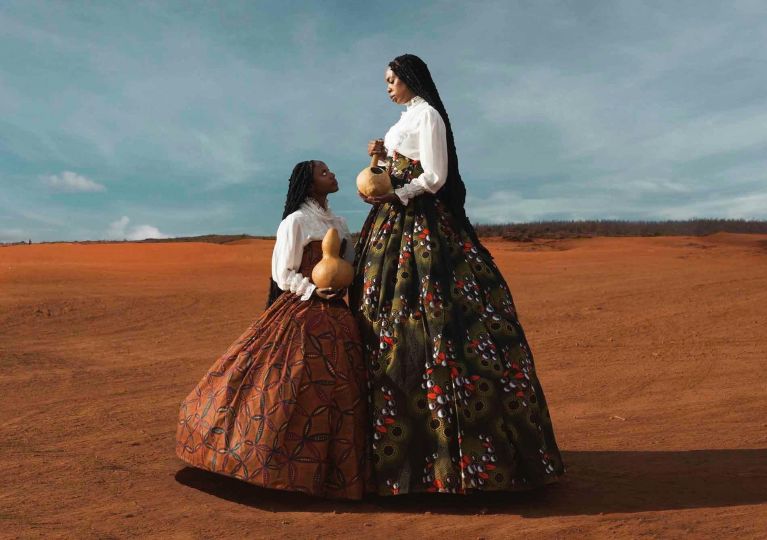Archives 2020
In the late 1990s, Rock and Roll photographer Jim Marshall introduced me to his personal friend and fellow photographer, Steve Schapiro. I was thoroughly amazed at the breadth and depth of his photographic archive. He began his career documenting the American scene across all strata of the edge of our culture. Most particularly, the disenfranchised of the times: the migrant farm workers, feminists, the artists, Harlem and the Civil Rights movement. I had the pleasure of working with Steve and editing his first book, American Edge. He covered the civil rights movement extensively, and has a great story about one of his many photographs of Muhammad Ali, or Cassius Clay as he was known then.
David Fahey
Muhammad Ali (Cassius Clay) with Children, Louisville, Kentucky, 1963
In 2012 I received an email from Lonnie Ali, the wife of Muhammad Ali. She wrote “almost fifty years ago (1963) you came to Louisville and photographed Muhammad, then Cassius Clay at his parent’s house. That was the day I first met Cassius Clay. It was quite fateful that you were there photographing that May day because I think you actually snapped a picture of the moment Cassius and I met.” I went through my contact sheets and found this photo that had never been edited, printed or published before, of the exact moment that Lonnie and Muhammad met. Their eyes are locked upon each other She was a 6 ½ year old girl with pig tails. He was 21 and had just won the Golden Gloves with 15 knockouts. When Lonnie was 19 she decided she wanted to marry him and took care of him all these years. – Steve Schapiro
Robert Kennedy at Berkeley, California, 1966
I always felt Robert Kennedy was the ultimate political statesman who could put America back together again. Bobby had the intelligence, the sense of caring, and equally as important, the ability to play politics, with a little bit of Camelot mixed in as well.
The 60’s had started with great expectations. And then there was the downside killing of our president, continued war, and a racial problem that in no way had been solved.
By 1966, Bobby had decided he would run for the Presidency. On his travels throughout the country, he was met with excitement and hope. He came to talk at a stadium rally in Berkeley California to an over enthusiastic crowd. Throughout the course of his speeches, he emphasized problems that were had and potential solutions.
A large press corps had begun to follow Bobby everywhere he went, and somewhere in that Berkeley speech, they picked up on something, other than the message Kennedy wanted the country to hear.
When the event ended, Bobby invited the entire press corps to his hotel suite, and while they had drinks in the living room, he and his aids, in the bedroom were phoning to editors above their heads to get the message that he really wanted out there. – Steve Schapiro , June 6th, 2018
Robert Kennedy Campaign, New York, 1963
As Robert F. Kennedy traveled through America on his Presidential campaign, it was amazing to see the enormous crowds that showed up to see him, with so much love and respect. It was not just young liberals, but a cross section of, young and old, black and white.
By the end of the day, his hands were sore from so many people reaching up to shake those hands or to touch him. His cufflinks quickly disappeared, and his bodyguard had to keep a strong hold on him, so that he would not be swept into the crowd.
Was it just the Kennedy name which brought them on? Or was it the sense that he brought with him the hope for a new day? – Steve Schapiro, June 5th, 2018
Martin Luther King Jr.’s Motel Room Hours After He Was Shot, Memphis, Tennessee, 1968
“When Martin Luther King Jr. was shot, LIFE Magazine asked me to go immediately down to Memphis. I had done much civil rights work and had photographed King preaching in Birmingham and in Selma.
In Memphis, I first photographed the third-floor bathroom, in the rooming house from which the shot had been fired. Supposedly, it was James Earl Ray standing in the tub and leaning the barrel of his gun in the windowsill pointing at the Lorraine Motel. There was a black hand print on the wall at the side of the tub which I photographed. LIFE ran it as a full-page picture the following week, assuming it was Ray’s. – Steve Schapiro
Handprint on Bathroom Wall (Room View), Memphis, Tennessee, 1968
When I went to what had been King’s room at the motel, the door was closed. There were two photographers already inside with Hosea Williams, a King aide. I knocked on the door. One of the photographer blurted out, “Don’t let him in,” but Williams opened the door for me anyway.
The room was as it had been. I photographed King’s briefcase which held books he had written (one with my Selma March photograph on its cover) and a newspaper called Soul Force, along with dirty shirts and a few cans. The television was on. A commentator was talking about King on the TV with King’s ghostly image behind him.
I made a wide shot of the table with King’s briefcase and dirty shirts on it, and on the wall, the TV set with King’s image. ‘The man’ had left the room, his human form forever lost – but his incidental material belongings, and more than that, the spirit of his image, remained.” – Steve Schapiro, 2017
Fahey/Klein gallery
148 North La Brea Avenue
Los Angeles CA 90036

